How to Design and Lay Out a Small Living Room
http://decor-ideas.org 07/20/2014 00:14 Decor Ideas
All small spaces present design challenges, but as the living room is where you probably spend the most time (and certainly the one guests experience the most of), designing a small one can be especially tricky. How do you strike a balance between making the room feel as spacious as possible while also squeezing in extra seating? What furniture should you choose, and where do you put it? Here are 15 design tips for making the most of your space, plus 10 specific furniture layout ideas for small living rooms. Let’s get started.
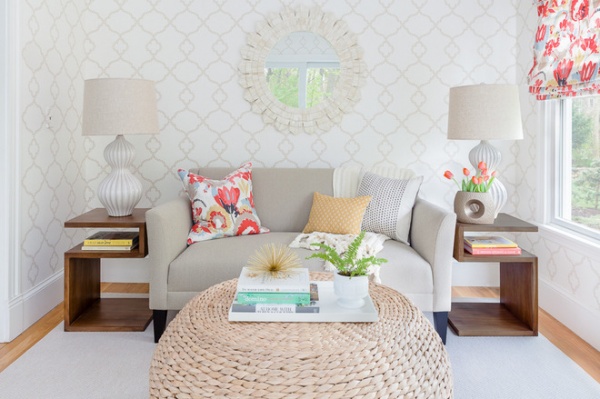
1. Use mirrors and wallpaper. A small living room, especially if it’s short on windows, can feel a bit boxed in. Create a focal point, boost light and add depth all at once by papering a wall and hanging a mirror on top. If you can position the mirror across from a window, all the better — the mirror will reflect the view outside, giving the impression of an extra window.
The layout: Center the love seat on the papered wall, flanked by a pair of matching side tables and lamps. A large woven ottoman can work as a coffee table or an extra seat. If there’s room, you could work in an extra (small-scale) chair or two across from the love seat in this arrangement. Seats: two to four.
See more about what mirrors can do for a small space
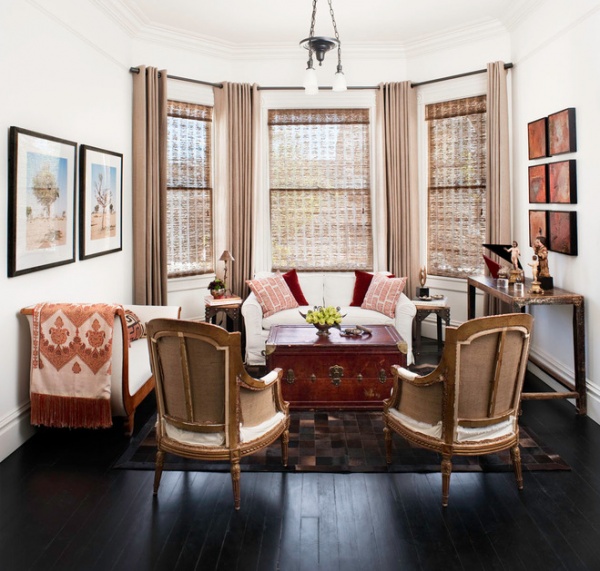
2. Add hidden storage. Pick furniture with built-in storage to limit clutter. A trunk or storage ottoman as a coffee table works well. Along the perimeter of the room, try a small chest of drawers or a small credenza instead of a console table to boost storage options.
3. Choose small-scale furniture. There is more to living room furniture than full-size sofas and bulky armchairs. Antiques shops are a great place to look for small-scale furniture, because the average room size was typically quite small until the last half century or so. Look for small settees, love seats and chairs that can work for your space.
The layout: The love seat is centered in front of the bay window, with petite tables on either side. A pair of Louis XVI armchairs sit opposite the sofa, with a trunk as a coffee table in between. An antique recamier is positioned on the wall diagonally across from the sofa, with a slim console table opposite it. Seats: six.
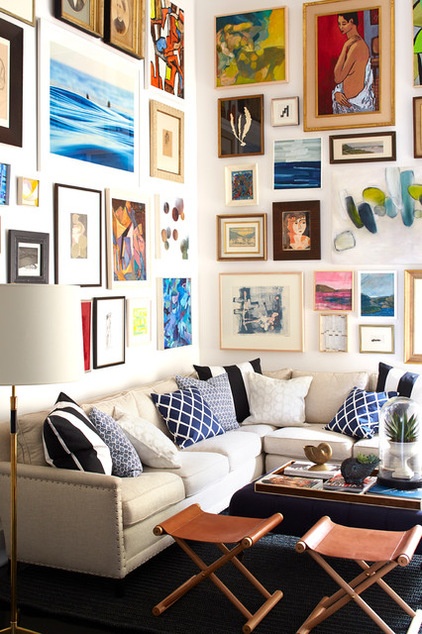
4. Look up. If your small living room is blessed with high ceilings, take full advantage of that extra space! While vertical space doesn’t help with squeezing in an extra seat, drawing the eye upward does help give the impression that your room is far larger and grander that it would otherwise seem. Fill the vertical space with an eclectic art gallery.
5. Completely fill a corner. It’s a bit counterintuitive, but if you have a small corner living room space, sometimes going with the largest piece of furniture possible can actually make it feel bigger. Why? A generously sized sectional (like the one shown here) is comfortable and able to seat tons of people — but because it reads as just one piece, it helps the room feel uncluttered. A modern sectional with clean, straight lines works better in a small space than an overstuffed version.
The layout: A tailored sectional sofa is in one corner, with a pair of leather folding stools pulled in close to form a conversational group. Fill out the group with a slipper chair if you have the room. Seats: seven or eight.
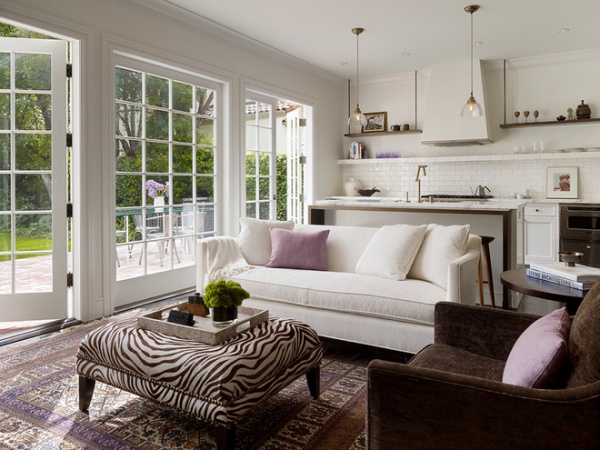
6. Downsize the sofa. In some spaces a full-size sofa just won’t do. Try a slimmed-down love seat or a petite sofa on for size instead. Choose one with clean lines and exposed legs for the airiest look.
The layout: A small sofa floats in the middle of this open-plan space, facing a media center on the wall. One armchair and an upholstered ottoman (that can double as an extra seat) round out the group. Seats: three or four.
6 Reasons to Float a Sofa
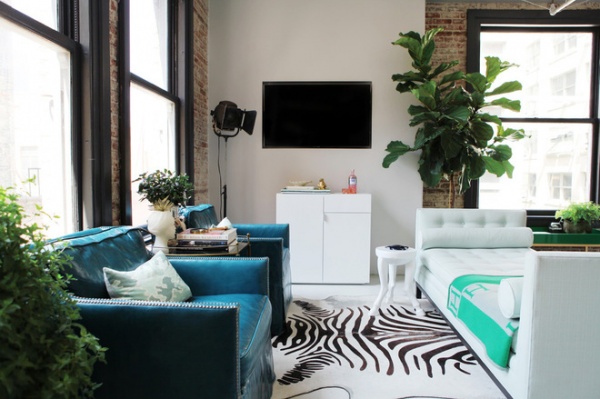
7. Try a backless sofa. In an open-plan space, sometimes the best position for the sofa is not on the wall but in the middle of the room. But unless your sofa is quite small (see previous photo), a couch in the middle of a small room can really gobble up space. A backless sofa is a very chic alternative and can be used from both sides — quite a bonus when seating options are limited. And if you want to use it in a larger room someday, it can act as a divider between two seating area.
8. Add plants. Like wallpaper and mirrors, plants are a wonderful way to add depth to a small living room. Lush greenery softens corners and fools the eye into thinking there is more to the room than there really is. Plants are especially effective in corners and beside or behind chairs and sofas.
The layout: A backless sofa floats in the center of this open-plan space. A pair of upholstered armchairs with a small table between sits beneath a bank of windows opposite the sofa. A small side table that can double as an extra seat sits beside the sofa — and during a party, the backless sofa can handle two people perching on each side. Seats: four to seven.
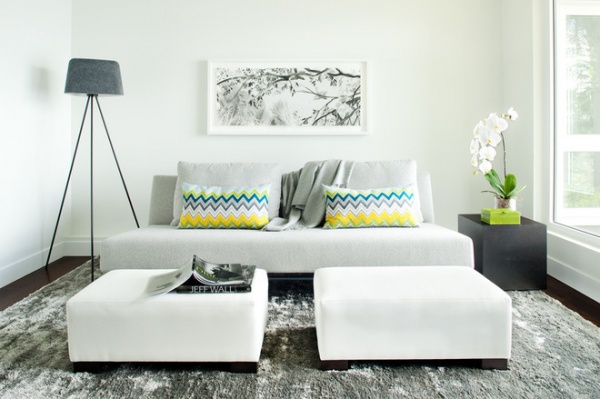
9. Use multifunctional furniture. In a small living room, each piece of furniture should earn its keep. Think of using ottomans that work as a coffee table or extra seating, nesting side tables that can be moved around as needed or versatile little stools that can be seats or tables.
The layout: A sleek, armless sofa floats slightly away from the wall; two large, low ottomans double as coffee tables and seats. Seats: two to four.
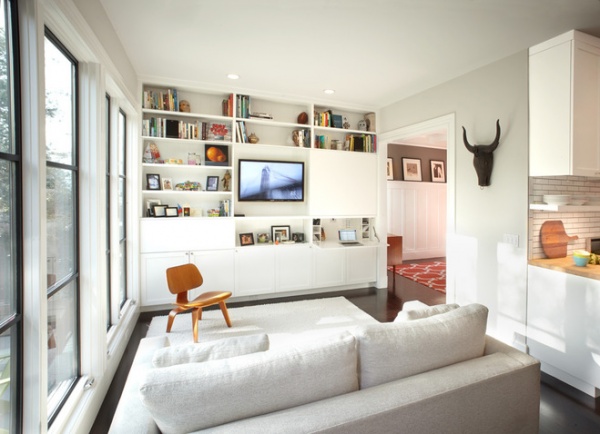
10. Build in storage. Instead of letting lots of small pieces of furniture (a bookshelf here, a chest there) eat up space, bite the bullet and devote one entire wall to storage. A floor-to-ceiling storage wall can be customized to contain everything from books to a media center — perhaps even a pull-down desk!
11. Keep a stash of spare seats. In a truly small space, it may not be possible to have as many seating options as you would like. One way to get around this is by storing a few folding café chairs or stacking stools in a closet (or under a bed), where you can easily pull them out when company is coming.
The layout: This built-in storage wall has a hide-away TV, bookshelves and cabinets; a small-scale love seat is opposite. A low-slung plywood Eames lounge chair has been slipped in front of the media wall without blocking the storage. Seats: three.
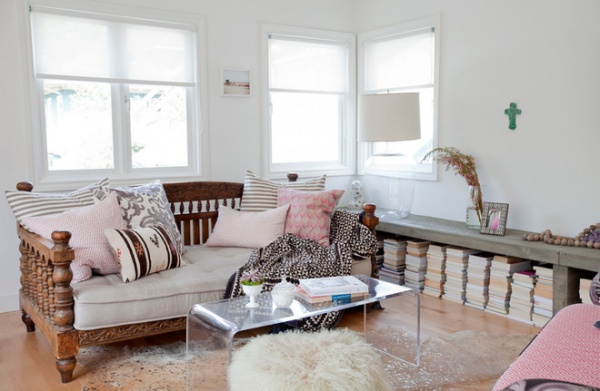
12. Shake up the sofa-and-armchair routine. This stylish, petite living room has a wood-frame daybed (which doubles as a guest bed), a little upholstered settee and a window seat, offering an array of seating options without a single traditional sofa or armchair in sight.
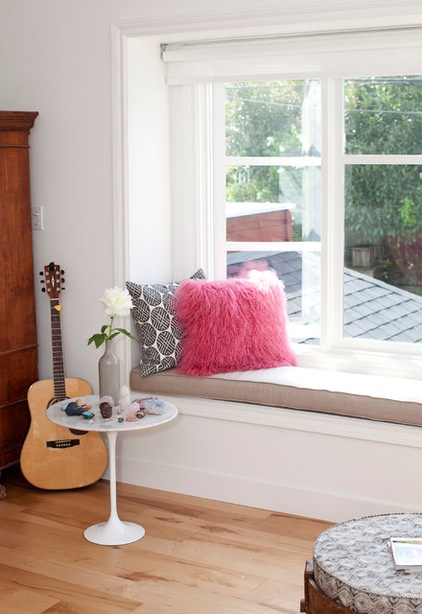
Accent a built-in window seat with throw pillows, and set a small side table and ottoman nearby to turn it into a proper seating area.
The layout: The daybed faces a settee, with a slender acrylic coffee table and a fur pouf between them; there’s a built-in window seat beneath a bank of windows on the opposite side of the room. Seats: seven.
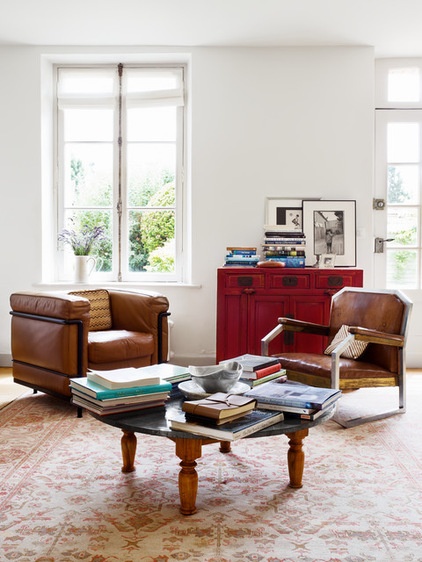
13. Skip the sofa. Who says a living room has to have a sofa at all? If space is tight, try circling two, three or four armchairs around a coffee table instead. For added flexibility, make the coffee table a tray-topped ottoman that can be used as a seat, or add a pouf or stool to the arrangement.
The layout: Set a low, round coffee table in the center of the room with three armchairs around it.
Could Your Living Room Be Better Without a Sofa?
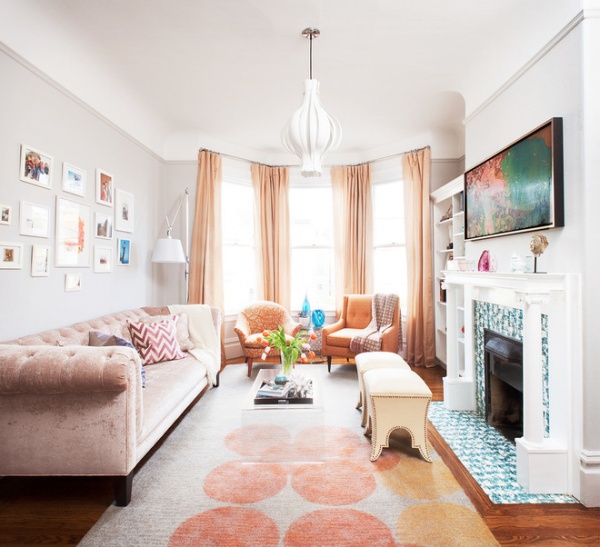
14. Try an “invisible” piece. Acrylic, Lucite and glass are wonderful materials to use in a small living room, because they take up zero visual space. Try a coffee table or nesting side tables with a waterfall edge in one of these clear materials.
15. Put low seats in front of the fireplace. Put a pair of small, backless seats — stools, X-benches, ottomans — in front of the fireplace in a small living room to sneak in some extra seating without blocking the room’s focal point. In fact, far from blocking the fireplace, a pair of cute, low seats can actually make the fireplace area look more inviting … and if they come with concealed storage, so much the better!
The layout: Put a pair of armchairs in front of a bay window and a long chesterfield sofa against the wall opposite the fireplace; add a slim, clear coffee table. Set a pair of small upholstered storage ottomans in front of the fireplace. Seats: seven.
Tell us: We’d love to see your great small living room. Please share a photo and tell us about it in the Comments!
More: How to Get Your Furniture Arrangement Right
Related Articles Recommended












